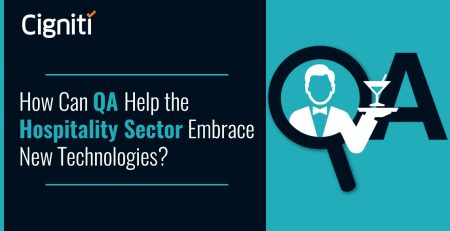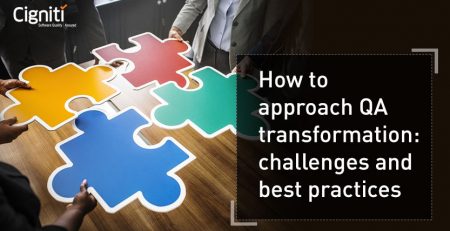Quality Assurance in Big Data Analytics: An IoT Perspective
|
Listen on the go!
|
The rise of the Internet of Things (IoT) as a primary data contributor in big data applications has posed new data quality constraints, necessitating the creation of an IoT-inclusive data validation ecosystem.
In a big data application, standardized data quality methodologies and frameworks are available for data acquired from a range of sources such as data warehouses, weblogs, social media, and so on.
Because IoT data is so different from traditional data, the issues of assuring its quality are likewise distinct, necessitating the use of a specially built IoT data testing layer.
IoT engineers and executives must ensure that their IoT deployments have a solid data governance program in place, one that addresses the necessary data quality measures as well as how to ensure that they are met and maintained.
Any conclusions or forecasts based on facts that do not satisfy a predetermined criterion are faulty, and when predictions skew in the wrong direction, they can cost an organization money.
Precision, record completeness, data set completeness, authenticity, reliability, originality, coherence, accuracy, usability, and availability are all objective properties or dimensions that data scientists can measure to assess data quality. Usability, credibility, interpretability, and objectivity are examples of subjective attributes.
Each company must assess its data and establish the level of quality required for each IoT application. In other words, there will be no “one-size-fits-all” regulation for businesses to follow. The criteria of data quality dimensions differ from one business to the next, depending on the needs of each company and the decisions made using IoT data.
According to Mike Gualtieri, vice president and principal analyst at Forrester Research, “Organizations should understand the data quality tolerances for accuracy, time and completeness needed for a particular application. Accuracy for [a grocery store] freezer may not have to be as precise as, say, the temperature to keep an industrial chemical in a gaseous state.“
Engineers have the ability to change the data quality at several points throughout the IoT data pipeline.
Endpoint devices may cause problems for themselves. The data collected by devices that are not dependable or properly calibrated may not be an exact or precise measure of reality.
Device deployment can sometimes be problematic. Endpoint devices that are incorrectly positioned or programmed, for example, may collect incomplete or irrelevant data. A sensor designed to monitor vibrations on a highway bridge that was programmed to only take measurements when traffic flow is low does not generate the entire range of data that is likely required.
Data quality may be impacted by issues encountered along the IoT pipeline, such as security breaches or formatting changes.
To address the quality characteristics that are required, organizations must develop a data strategy.
A solid data quality governance program begins with teams identifying the data needed to meet corporate goals, followed by deciding the data quality aspects to utilize. The parameters of those dimensions are determined by the intended application, or how precise, full, and timely the data quality must be for the judgments to be made.
Data quality exists on a spectrum, and the techniques and tools used to acquire, combine, store, and analyze data vary along that spectrum. Identifying the nature of the data collected and the reason for which it will be used will dictate the shape of the solution employed to ensure that the quality is appropriate for the purpose.
Data from endpoint devices has far higher data quality requirements than data from an IoT deployment intended to improve efficiency.
A governance program must also include procedures for reviewing data and confirming that it continues to match the organization’s dimension standards throughout the deployment’s lifecycle, taking into consideration the evolution of IoT use cases.
The concepts, rules, policies, practices, procedures, monitoring, and enforcement of data collection, creation, handling, utilization, and disposition are all covered under data governance. Data governance should ideally be built into the architecture of data-generating technologies rather than being an afterthought.
The majority of current scientific and industry efforts in IoT are focused on developing integrated platforms in order to realize its commercial potential. The present IoT and Big Data setting poses a variety of issues, such as ensuring sensor data quality defined by accessibility and veracity. Traditional signal processing methodologies are no longer enough, necessitating a combination of architectural and analytical approaches.
The rapid expansion of IoT applications brings with it a slew of new challenges that must be addressed.
Data created by internet-connected devices is growing at an exponential rate, and the storage capacity of Big data systems is limited, thus storing and managing such a massive volume of data has become a major difficulty. To collect, save, and process this data, some procedures and frameworks must be designed.
Generated data is heterogeneous in nature. Because this data is organized, unstructured, and semi structured in many formats, it is difficult to display it directly. Data must be prepared for improved visualization and understanding in order to make appropriate industrial decisions on time and increase industry efficiency.
Every smart object in a globally connected network is an IoT system, which is primarily employed by humans or machines, and it raises concerns about privacy and data leakage. As a result, this critical data should be kept private and secret, as it contains personal information about consumers.
Connected devices are capable of sensing, communicating, sharing information, and executing analyses for a variety of purposes. Data assembly methods must successfully deploy scale and conditions of integrity with some standard procedure and criteria, since these devices ensure users do not share their data indefinitely.
For the seamless and ongoing operation of IoT operations, internet-enabled devices should be connected to an endless power source. Because memory, computing power, and energy are restricted on these devices, they must be deployed using light-weight methods.
Apart from these fundamental issues, Big data analytics has also faced significant difficulties, such as device security and backup against assaults, as these are the most obvious tools for attacks and provide a route for malicious operations.
Various Big data technologies and tools are easily available sources for developing efficient and real-time data analysis of globally connected devices. We have seen the combined impact of Big data analytics and IoT in analyzing huge sets of data accurately and efficiently with suitable mechanisms and techniques.
Data analytics also differs in terms of the types of data gathered from various sources and evaluated for results. Although such a huge system is capable of high performance, there are several challenges with data processing.
Depending on the architecture of their applications, each company takes a different approach to IoT testing. Instead of performing testing according to requirements, testers should focus on the TAAS (Test-as-a-User) approach for IoT testing.
Integration testing is a major player in IoT testing, and it should be robust and accurate enough to find bugs in the system.
Conclusion
The world is currently reliant on IoT mobile app development for a variety of reasons, including improved workplace safety, improved customer experience, cost-effective service, increased productivity, and a better understanding of consumer behavior. IoT devices, on the other hand, present an infinite number of security risks.
Cigniti offers independent quality engineering and a wide range of software testing services and solutions for the next generation enterprises and ISVs across the globe. Our experienced and deep-skilled quality assurance professionals have a hands-on, end-to-end understanding of the challenges faced by enterprises while on the path of digital transformation.
We implement the best possible software testing methodologies and applications, a Testing Center of Excellence, and world-class software testing Labs to deliver on our promise of Quality Engineering, Quality Assurance, and Digital Assurance.
Whether you have desktop, mobile or next-gen-based applications, our software testing specialists work with a focused approach to help you get more out of your testing efforts and improve time to market, and thus, your ROI.
Get in touch with our Quality Assurance experts to learn more about quality assurance in big data analytics from an IoT perspective.





Leave a Reply